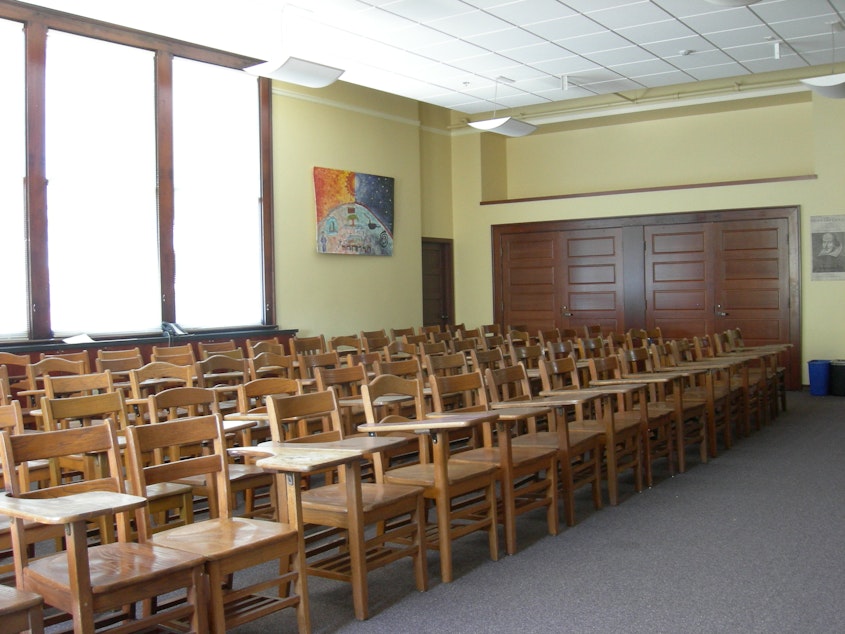Summer school in Seattle goes ahead, on a short schedule

It's been a strange school quarter, to say the least, leaving many parents to wonder how their kids can catch up academically over the summer.
KUOW’s education reporter Ann Dornfeld talks about what Seattle Public Schools is doing to help students learn between school years.
This interview has been edited for clarity.
What is the district's plan for summer school this year?
The program is open to all students. Registration begins next week. The summer session is just one month long this year, from the first week of July to the first week of August.
It will be primarily online, but without the number of video conferences that families might be getting used to these days.
For elementary students, there are going to be 10 pre-recorded video lessons in math and reading subjects, and then five videos about social-emotional skills. The lessons are also going to be available as paper packets at school mail pickup sites, for kids who might not have online access, or for whom online is not the best medium for delivering lessons.
Kids are going to be divided into classes. Each class is going to meet once a week in a video conference for something like a story or an art project at the elementary level. Teachers are also going to meet one-on-one with each elementary student twice a week, either by phone or by video chat.
Does summer school look the same for middle and high school students?
No, it's going to be really different. For teenagers, the district is using an outside company, Apex Learning, for online learning. That's for 7th through 12th graders.
High school students can make up credits for classes they failed, or if they got incompletes on this term.
How about for those students that are moving up, from elementary up to middle school or from middle school up to high school?
There are specific offerings for kids starting middle or high school, things like study skills lessons. For kids who are just starting kindergarten this fall, the district usually offers a week of half-day orientation at most schools, for five-year-olds to get the hang of being a student.
The district says it's still hoping to offer that in person in August, as planned. They're just waiting to see what the reopening directives are. They say that they actually have a couple of other options if in-person doesn't work.
How about kids who get special education services, or who need extra help for other reasons?
The plan is to offer more individualized support to kids who need it in Seattle. Those students are supposed to be identified by the school district, and they might receive more academic or emotional help, the district says.
This is really a place where a lot of parents say the district has slipped, that special education students have really been getting shortchanged during the pandemic. Parents say that their students are not receiving the therapies they usually do, even when those therapies are still being offered by outside organizations through video conference. Parents say it is possible for things like occupational therapy to happen by video and they're frustrated their kids are not getting it.
Also, a lot of parents of special education students have told me that the online coursework has not been sufficiently adapted to meet their kids’ needs. They're really eager to hear the district’s specific plans for possibly changing course this summer for special education students.
Are there any updates about what the fall might look like?
OSPI, the state education department, is right now holding work groups to make recommendations about the strategies that districts can employ this fall. That announcement is scheduled by mid-June. There is so much still up in the air. For instance, OSPI tells me that those could either come in the form of suggestions to districts, or as edicts. That's still a question mark.
There's also a good chance that those will include a range of options, depending on things like the reopening status of the county that district is in. What works in rural Washington, someplace that has reopened more, might be very different than what's possible in King County, or what's recommended or allowed in King County.
OSPI has indicated the status quo of distance learning is not sustainable, but it's unlikely that the viral transmission rate is going to be low enough for schools to open as usual in the fall.
Most likely is some combination of in person and distance learning, possibly with younger students getting priority doing more in-person learning and older kids doing more online. Stay tuned for more on that.
Listen to the interview by clicking the play button above.





